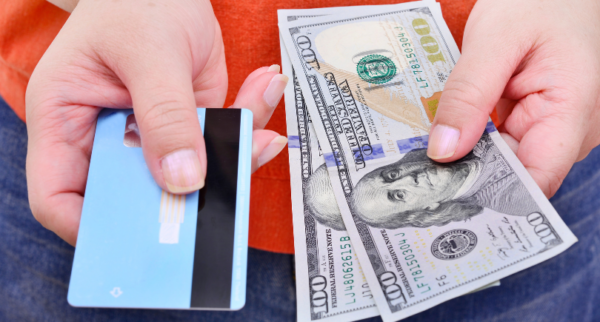Best credit cards after bankruptcy of December 2025
Navigating credit cards after bankruptcy can be challenging, but responsible credit use is crucial for rebuilding your financial health. While qualifying for new credit might seem daunting, it’s a vital step. CardRatings’ editors have identified the best credit cards after bankruptcy, including options with rewards and no annual fees, designed to help you re-establish your creditworthiness.
Although bankruptcy filings have seen a general decline, a significant number of individuals still face the aftermath each year. This underscores the need for accessible and effective best credit cards to rebuild credit. It’s important to recognize that bankruptcies often stem from unforeseen circumstances, such as medical emergencies or other uncontrollable “adverse events,” as research indicates.
Fortunately, many lenders understand that bankruptcy doesn’t always reflect a person’s long-term financial habits. If you demonstrated responsible credit management prior to bankruptcy, you can regain access to the security and convenience of credit cards. In fact, utilizing credit cards after discharge is a powerful method for improving your credit score. Your credit score is influenced by various factors, including payment history, credit utilization, and the age of your accounts.
Therefore, applying for a credit card soon after your bankruptcy discharge can be a strategic move to begin rebuilding your credit profile. However, it’s essential to wait until your discharge is finalized before submitting any applications.
CardRatings’ top picks for the best credit cards after bankruptcy
Rebuilding your credit after bankruptcy can feel daunting, but it’s a crucial step towards financial recovery. Utilizing the right tools can make this process significantly smoother. This list highlights some of the best credit cards after bankruptcy, specifically designed to help you establish a positive payment history and improve your credit score. These best credit cards to rebuild credit offer opportunities to demonstrate responsible financial behavior, paving the way for a stronger financial future. If you’re looking for viable credit cards after bankruptcy, explore the options below.
Why we like it
If it weren't for the security deposit, it'd be easy to mistake this card for an unsecured credit card because of its rewards. Not only can you earn bonus cash back on select purchases, but you'll also have all of your cash back rewards matched at the end of your first year as a cardholder, which is a great perk for a secured credit card.
If it weren't for the security deposit, it'd be easy to mistake this card for an unsecured credit card because of its rewards. Not only can you earn bonus cash back on select purchases, but you'll also have all of your cash back rewards matched at the end of your first year as a cardholder, which is a great perk for a secured credit card.
- No weird fees. It isn't just a matter of there being no annual fee, but some secured credit cards have processing fees, application fees, membership fees, etc. This card is pretty straightforward without a ton of extra fees to worry about. .
- No foreign transaction fee. So, if you travel abroad, this is a credit card worth packing.
- Try to make your payments on time, since that's the best way to eventually graduate from a secured credit card to an unsecured one, but you won't be charged a penalty APR if you miss a payment.
- The $200 minimum security deposit could be a stretch for some people. However, there is no annual fee to worry about, which should help.
Why we like it
If you're worried about attaining a higher level of credit but don't have a huge deposit to put down, this might be a good option for you. With this card, a deposit as low as $49 (and up to $200) can establish your line of credit. Plus, cardholders also have access to many of the same great perks unsecured Capital One credit cards offer.
If you're worried about attaining a higher level of credit but don't have a huge deposit to put down, this might be a good option for you. With this card, a deposit as low as $49 (and up to $200) can establish your line of credit. Plus, cardholders also have access to many of the same great perks unsecured Capital One credit cards offer.
- Feel free to take this card abroad with you thanks to no foreign transaction fees.
- Monitor your credit score with CreditWise from Capital One.
- You could earn back your security deposit as a statement credit when you use your card responsibly, like making payments on time.
- The card has a fairly high APR (RegAPR), but the whole point of getting this card is to build credit, which should mean you don't carry a balance.
- There is a late fee if you pay late, but this is a pretty standard thing with credit cards.
Why we like it
Returning from bankruptcy means rebuilding your credit, which involves, among other things, showing responsible use of credit. With the Chime® products, your secured card limit is tied to the amount of money in your associated Chime debit account. That means you can't overspend, nor are you at risk of paying interest charges. You can use your security deposit to pay your monthly bill.
Returning from bankruptcy means rebuilding your credit, which involves, among other things, showing responsible use of credit. With the Chime® products, your secured card limit is tied to the amount of money in your associated Chime debit account. That means you can't overspend, nor are you at risk of paying interest charges. You can use your security deposit to pay your monthly bill.
- It's always important to pay your balance in full, but especially so when you're working on building your credit score. This card makes it impossible to carry a balance.
- There is no minimum credit score required to apply for this card and no credit score required to qualify.
- There's no annual fee or minimum security deposit required2.
- There are no rewards earned on purchases.
- It's great that you won't pay interest1, but it also means you CAN'T carry a balance should you need to. It's probably for the best that way, but still worth pointing out.
Why we like it
If it's an unsecured credit card that you're after, the CardName card is a good option to consider as it's designed specifically for people looking to rebuild their credit. There's no security deposit with this one; however, there is an annual fee, but we think the 1% cash back that can be earned on eligible gas, grocery and telecommunication purchases, which include internet, cellphone, cable and satellite TV services helps to outweigh this cost, especially since unsecured credit cards that offer good rewards can be harder to qualify for. Information about this card has been collected by CardRatings and has not been supplied or reviewed by the issuer.
If it's an unsecured credit card that you're after, the CardName card is a good option to consider as it's designed specifically for people looking to rebuild their credit. There's no security deposit with this one; however, there is an annual fee, but we think the 1% cash back that can be earned on eligible gas, grocery and telecommunication purchases, which include internet, cellphone, cable and satellite TV services helps to outweigh this cost, especially since unsecured credit cards that offer good rewards can be harder to qualify for. Information about this card has been collected by CardRatings and has not been supplied or reviewed by the issuer.
- Obviously, this is a card to rebuild credit, so it's a nice perk that there's the opportunity to earn rewards.
- The free credit score tracking is appreciated.
- As with an unsecured credit card, you'll receive zero fraud liability, and so if your card is stolen, you won't be liable for the charges.
- There's a chance for a fairly high annual fee.
Why we like it
With this card, no credit check is required to qualify, meaning the amount of your security deposit doesn't depend on your creditworthiness, but instead, you have total control over the amount of your deposit from $200 to $3,000 (with approval). That also means your credit won't take a hit when you apply.
With this card, no credit check is required to qualify, meaning the amount of your security deposit doesn't depend on your creditworthiness, but instead, you have total control over the amount of your deposit from $200 to $3,000 (with approval). That also means your credit won't take a hit when you apply.
- Relatively low RegAPR APR. You can definitely find secured credit cards with significantly higher APRs. So in that sense, this card is a keeper.
- You can choose any available due date for your bill, which should make budgeting and responsibly paying your card easier.
- You can add authorized users to the card, if you want, and as long as they use the card responsibly, you may end up rebuilding your credit faster.
- This isn't the best card to travel abroad with as it charges a foreign_fee fee on foreign transactions.
- Don't misplace your card! Besides being bad practice in terms of ID theft risk, there's also a $10 card replacement fee.
Compare bankruptcy friendly credit cards by perks and features
Want to see how our picks for the best credit cards for after bankruptcy stack up against each other? Our comparison tool makes it easy to compare up to threetwo cards at a time. Simply select the cards you’re interested in and we’ll automatically display their key perks and features side-by-side. With a quick glance, you can easily identify the card that best suits your needs and preferences.
Select up to 23 cards to compare side-by-side:
VS
Ask CardRatings’ experts
Our CardFinder tool is also a great way to find the right card for you!
Tired of searching for the right credit card? CardFinder makes it quick and easy. Simply tell us your preferences and we’ll do the heavy lifting. Our three-step process saves you time and effort, so you can spend less time searching and more time enjoying the rewards. Get started today!
Frequently asked questions about credit cards after bankruptcy
What is the difference between Chapter 7 and Chapter 13 bankruptcy?
Chapter 7 and Chapter 13 bankruptcy offer distinct pathways to financial relief. Chapter 7, often termed "liquidation bankruptcy," aims for the discharge of eligible unsecured debts, such as credit card debt and medical bills, through the potential sale of non-exempt assets. However, many exemptions exist to protect essential possessions. Conversely, Chapter 13, or "reorganization bankruptcy," establishes a structured repayment plan over three to five years, allowing individuals to address secured debts like mortgages and car loans, thus preventing foreclosure or repossession. The fundamental difference lies in the treatment of debt: Chapter 7 seeks debt elimination, while Chapter 13 facilitates debt repayment. Determining the appropriate chapter hinges on factors such as income, assets, and the type of debt held, making consultation with a bankruptcy attorney essential for personalized guidance.
Learn more about the differences between Chapter 7 and Chapter 13 bankruptcy.
Can I get a credit card after bankruptcy?
Yes, obtaining a credit card after bankruptcy is possible, and it's a key step in rebuilding your credit. While your initial options might be different than before, you can still access credit. Initially, you may find secured credit cards, which require a deposit, are the most accessible. These cards allow you to demonstrate responsible credit behavior, which is crucial for improving your credit score. Over time, as you establish a positive payment history, you'll likely qualify for unsecured credit cards with better terms. Another helpful strategy is becoming an authorized user on someone else's credit card, provided they have a strong credit history and make on-time payments. This can significantly boost your credit score. Remember, consistent and responsible credit use is the foundation for rebuilding your financial standing after bankruptcy.
Learn more about applying for a credit card after bankruptcy.
How long after bankruptcy can I get a credit card?
You can begin applying for credit cards once your bankruptcy is discharged, but the timeframe for discharge varies. Chapter 7 bankruptcy typically discharges debts within a few months, while Chapter 13 repayment plans can last three to five years. Regardless of the chapter, it's vital to approach credit responsibly afterward. Start by creating a realistic budget and a plan for credit card usage. Remember, you don't need to carry a balance to build credit; consistent, on-time payments are key. Consider using a secured credit card initially to establish a positive payment history. Furthermore, take time to understand the factors that led to your bankruptcy. Whether it was due to unforeseen circumstances or unsustainable spending habits, identifying the root cause allows you to implement safeguards and develop healthier financial practices for the future. Building good credit after bankruptcy is a gradual process that requires discipline and a well-thought-out financial strategy.
Learn more about applying for a credit card after bankruptcy.
What options do I have if I am declined for credit?
Being declined for credit can be discouraging, but it's not the end of the road. You have several effective options to rebuild your credit and access financial tools. First, consider contacting the card issuer directly. Sometimes, a conversation explaining your situation, particularly if it involved extenuating circumstances, can lead to reconsideration. Next, explore becoming an authorized user on a trusted friend or family member's credit card. This can be a powerful way to leverage their positive credit history to improve your own, even if you don't actively use the card. Finally, a secured credit card is an excellent option, especially if you have a limited or damaged credit history. By providing a security deposit, you essentially guarantee your credit limit, giving you a chance to demonstrate responsible credit behavior and build a positive track record. Each of these strategies can contribute to improving your creditworthiness and opening up more financial opportunities in the future.
See additional steps to consider if your credit card application is denied.
What is the easiest credit card to get after bankruptcy?
The most accessible credit card option after bankruptcy is typically a secured credit card. These cards are specifically designed to help individuals with damaged credit rebuild their financial standing. While obtaining an unsecured credit card immediately after bankruptcy can be more challenging, some unsecured cards are more lenient with approval criteria than others. As time passes and you demonstrate responsible financial behavior, you'll find more unsecured credit card options becoming available. These cards may offer basic benefits, such as no annual fee, and provide a pathway to re-establish your creditworthiness. Remember, focusing on responsible credit management is key to unlocking more favorable credit opportunities in the future.
What is the difference between secured and unsecured credit cards?
The fundamental difference between secured and unsecured credit cards lies in the requirement of a security deposit. Secured credit cards require you to provide a deposit, which typically acts as your credit limit. This deposit protects the issuer, making secured cards more accessible to individuals with limited or damaged credit histories, such as those after bankruptcy. Unsecured credit cards, on the other hand, do not require a deposit and rely on your creditworthiness for approval.
Both secured and unsecured cards can help you build credit, as issuers generally report payment activity to credit bureaus. However, secured cards offer a lower risk entry point for those needing to rebuild their credit. Once you establish a positive payment history with a secured card, you may qualify for an upgrade to an unsecured card or receive your deposit back upon closing the account.
It's important to distinguish secured credit cards from prepaid cards. Prepaid cards do not usually report to credit bureaus and, therefore, do not contribute to credit building. When choosing a secured credit card, compare fees and interest rates to ensure you select the most favorable option for your financial situation.
See our top picks for secured credit cards.
What unsecured credit cards can I get after a bankruptcy?
Obtaining an unsecured credit card after bankruptcy is possible, but it requires careful consideration. The ease of approval can vary depending on the type of bankruptcy you filed. If you underwent Chapter 13, securing an unsecured card might be challenging due to ongoing repayment plans. However, post-Chapter 7 discharge, you may receive numerous pre-qualified offers.
While these offers might seem appealing, exercise caution. Lenders are aware that you cannot file for bankruptcy again for a period, which can influence their willingness to extend credit. Be particularly wary of subprime lenders and misleading offers that prey on vulnerable consumers. These offers often come with exorbitant fees and unfavorable terms.
Instead of rushing into a potentially detrimental agreement, consider building your credit responsibly. Focus on establishing a solid foundation through responsible financial behavior, and explore secured credit cards as a stepping stone. This approach will ultimately lead to better unsecured credit card options with more favorable terms in the long run.
How can I rebuild my credit after a bankruptcy?
Rebuilding credit after bankruptcy is a process that requires patience and consistent effort, but it's absolutely achievable. While a bankruptcy will impact your credit report for several years, you can take proactive steps to improve your creditworthiness.
A crucial first step is to establish a positive payment history. Consider applying for a secured credit card, which requires a security deposit that typically becomes your credit limit. Using this card responsibly and making timely payments will demonstrate your creditworthiness to lenders. After a period of consistent positive activity, you may qualify for an unsecured credit card.
Simultaneously, develop healthy financial habits. Create a budget, track your spending, and ensure you pay all bills on time. Understanding the factors that led to your bankruptcy is also essential to prevent future financial difficulties.
While some lenders may offer unsecured credit options, especially after a Chapter 7 discharge, proceed with caution. Focus on building a solid foundation through responsible use of secured credit and consistent financial management. This approach can pave the way for improved credit scores and better financial opportunities in the long term.
Learn more about credit card options for building credit after bankruptcy.
What is the best credit card after Chapter 7?
Rebuilding credit after a Chapter 7 bankruptcy requires a strategic approach. While securing an unsecured credit card immediately post-bankruptcy can be challenging, some options exist. One particular unsecured card stands out for its accessibility to those rebuilding credit, a rarity in this situation. It also offers a basic rewards program, which is uncommon for cards available after bankruptcy.
However, secured credit cards are generally the most accessible and effective tools for rebuilding credit after Chapter 7. These cards require a security deposit, but they provide a pathway to demonstrate responsible credit behavior. Ultimately, the best credit cards for rebuilding after bankruptcy are those that consistently report your payment activity to the major credit bureaus and have minimal fees. Whether you opt for a secured or unsecured card, focusing on responsible usage and timely payments is crucial for improving your credit score and financial standing.
Which high-limit credit cards can I get after bankruptcy?
Securing a high-limit credit card immediately after bankruptcy is generally difficult, as lenders typically view recent bankruptcy as a significant risk factor. While secured credit cards offer the potential for higher limits, this is contingent on the size of your security deposit.
However, it's important to understand that your creditworthiness can improve relatively quickly post-bankruptcy. Within a few months, you may find more favorable credit options becoming available.
While high-limit unsecured cards might be scarce, there are credit cards designed to help individuals rebuild their credit after bankruptcy. Exercise caution and carefully evaluate the terms and conditions, as some cards may come with excessive fees.
Focus on selecting cards with low annual fees and, most importantly, consistent reporting to the major credit bureaus. This reporting is essential for rebuilding your credit score. Some secured credit cards even offer rewards programs, providing an added benefit as you work towards financial recovery.
How can I use a credit card responsibly to rebuild my credit after bankruptcy?
To responsibly rebuild credit after bankruptcy using a credit card, consistently pay your bills on time and in full, keep your credit utilization low (ideally below 30%), and avoid applying for multiple credit cards at once. Focus on establishing a positive payment history with a secured card initially, then gradually move to unsecured options.
What should I look for in a credit card to rebuild my credit after bankruptcy?
Rebuilding credit after bankruptcy requires careful consideration when selecting a credit card. Focus on cards that report your payment activity to all three major credit bureaus, as this is crucial for establishing a positive credit history. Opt for cards with low or no annual fees to minimize costs during the rebuilding process. While interest rates are important, prioritize paying your balance in full each month to avoid accumulating debt. If you're starting with a secured card, look for those that offer a pathway to graduate to an unsecured card after demonstrating responsible use. These features can help you effectively rebuild your credit and regain financial stability.
Does the type of bankruptcy (Chapter 7 vs. Chapter 13) affect credit card eligibility?
Is it possible to remove bankruptcy from my credit report early?
What happens if I default again on a credit card after bankruptcy?
Meet the editorial team
Rating methodology: CardRatings’ experts review the fine print, details, perks, rewards and features of hundreds of cards and compare them side-by-side with similar cards. A card that makes an excellent balance transfer card may not make a great cash-back rewards card, even though it offers those rewards. While the Best of the Year list is announced annually, that list—and all other “best of” lists on CardRatings—are regularly reviewed by CardRatings’ editors and updated as necessary, as issuers frequently change the terms and features of each card. Card issuers cannot pay or influence the cards on these lists, or the order that cards appear.
For Capital One products listed on this page, some of the benefits may be provided by Visa® or Mastercard® and may vary by product. See the respective Guide to Benefits for details, as terms and exclusions apply.
1Out-of-network ATM withdrawal and OTC advance fees may apply. View the Bancorp agreement or Stride agreement for details; see back of card for issuer. 2Money added to Credit Builder will be held in a secured account as collateral for your Credit Builder Visa card, which means you can spend up to this amount on your card. This is money you can use to pay off your charges at the end of every month.
The information in this article is believed to be accurate as of the date it was written. Please keep in mind that credit card offers change frequently. Therefore, we cannot guarantee the accuracy of the information in this article. Reasonable efforts are made to maintain accurate information. See the online credit card application for full terms and conditions on offers and rewards. Please verify all terms and conditions of any credit card prior to applying.
This content is not provided by any company mentioned in this article. Any opinions, analyses, reviews or recommendations expressed here are those of the author’s alone, and have not been reviewed, approved or otherwise endorsed by any such company. CardRatings.com does not review every company or every offer available on the market.









